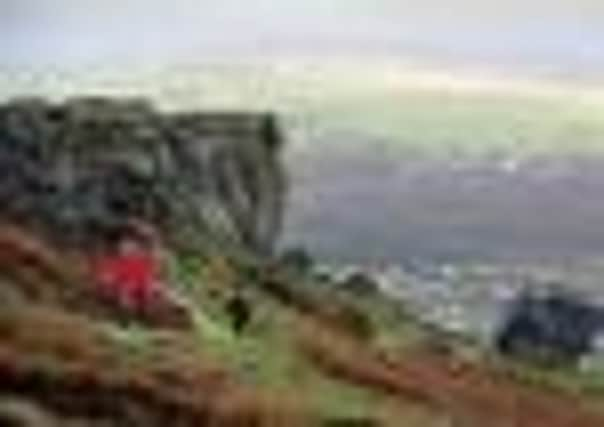Uncovered: Secrets of Ilkley Moor’s rock art


Archaeologists and amateurs have been puzzling for decades over the origin of hundreds of examples of ‘rock art’ which the dot the Yorkshire landscape.
Are they way markers, religious symbols, star charts or just ‘doodles’ done by early farmers with a bit of time on their hands?
Advertisement
Hide AdAdvertisement
Hide AdQuestions about their meaning continue to be debated in academic circles but now the public is being invited to the debate with the launch of a new guide to the rocks, some of which are on remote, windswept moorland and are notoriously hard to find.
There are more than 400 known rock carvings, known as ‘cup and ring’ stones, on Rombalds Moor, which includes Ilkley Moor, and they are thought to date back to before the Pyramids were built.
Members of Friends of Ilkley Moor are busy mapping the exact locations of the stones, noting down their co-ordinates and taking photographs for posterity.
And now the Friends have launched a Cup and Ring Stone GPS (global positioning system) trail so that owners of GPS systems, including the latest mobile phones, can find them.
Advertisement
Hide AdAdvertisement
Hide AdA Friends spokesman said the carved stones captured the imagination of all who saw them.
“The stones were carved during the Neolithic–Bronze Age period of around 4,000 years ago. These designs of cups, rings and lines are intriguing and enigmatic. The reason they were carved is unknown, but they are fascinating.”
Two members of the Friends, Colin Beecham and Barry Wilkinson, have spent the past few months locating some of the stones, recording the co-ordinates and planning the walk, which takes about two hours to complete.
Anyone with a GPS system or an Ordnance Survey map should be able to find the stones.
Advertisement
Hide AdAdvertisement
Hide AdMr Wilkinson, 75, a former newspaper photographer, said it was hoped the new technology would encourage younger people to take a look at the historic enigmas.
”We appreciate that the walking trail needs a certain knowledge of using GPS, but we hope the trail will appeal to our younger members.
“This was the case when I tried the walk out on three of my grandchildren, who spend most of their leisure time glued to computers.
“The were fascinated when they took turns using the GPS to find the eight stones on the trail. It takes about two hours, starting and ending at White Wells car park on Ilkley Moor.”
Archaeologists have welcomed the new trail.
Advertisement
Hide AdAdvertisement
Hide AdJohn Mcllwaine, archaeologist and lecturer at Bradford University, said: “These carved rocks are in a very public space and were designed to be seen by people.
“They are out in the open and could be maps or spiritual guides.”
He said Rombalds Moor would have looked very different - it was woodland - when the rocks were first carved.
Mr Mcllwaine believes the rocks do have a meaning, although it remains hidden.
Advertisement
Hide AdAdvertisement
Hide Ad“They are messages from the past, if only we could read them. The most interesting thing about them is not knowing. Who did these and why?”
He said the carvings may one day be ‘decoded’ just like Egyptian hieroglyphics.
Local historians welcomed the new guide but have expressed fears that the marked rocks may suffer further vandalism.
One historian told the Yorkshire Post: “I am very keen for people to discover them and be amazed by them and, hopefully, to respect them.
Advertisement
Hide AdAdvertisement
Hide Ad“There have been vandal attacks in the past. Paint and dye has been daubed on them. They are all Scheduled Ancient Monuments and are protected by law. These actions are criminal offences and the problem is they cannot be policed and they are very open to attacks.”
Unlike many, he does not have a theory about their meaning. “I don’t worry what they mean any more. People have been studying them for 100 years; none of their theories stack up. They may just be idle doodles. We will probably never know.”
Details of the GPS guide can be found at www.ilkleymoor.org